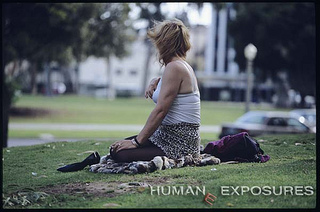Advocates for homeless people and LGBT youth have teamed up to launch a national campaign demanding the federal government dramatically expand efforts to reduce homelessness among young people. The Ali Forney Center, a New York-based program that offers housing and other services to LGBT youth, and the National Coalition for the Homeless have formed the National Campaign for Youth Shelter.
It is a collaboration that will build a grassroots campaign to demand a national response to youth homelessness. The campaign notes that each year as many as 500,000 youths up to age 24 experience homelessness while not accompanied by adults, but there are only about 4,000 youth shelter beds in the country.
Jerry Jones, National Coalition for the Homeless’s executive director, says:
It’s a particularly indefensible tragedy that young people are experiencing homelessness. It’s completely outrageous, and I think many people assume this is a problem that someone’s dealing with or that it’s not as large an issue as it actually is. There’s a sense of denial as a country in recognizing we’ve got tens of thousands of kids at any given point out there on the streets with nowhere to go.
Specifically, the National Campaign for Youth Shelter calls for a) A federal commitment to provide all homeless young people ages 24 and under immediate access to safe shelter; b) an immediate federal commitment to add 22,000 shelter beds for young people, as the federal government currently provides existing shelter beds through the underfunded Runaway and Homeless Youth Act; and c) a more accurate and comprehensive effort to count the number of young homeless people in the nation to determine the need for shelter beds over the next decade.
Lesbian, gay, bisexual and transgender youth are disproportionately represented among the population of young homeless people. In some parts of the country, up to 40% of young people who are homeless are LGBT, while only about 5% of the population is. In many cases, being LGBT is why they’re homeless, since their families have rejected them because of their sexual identity. The homeless young people are a largely invisible population, living on the streets, couch-surfing or sleeping in abandoned buildings. They tend to blend in with other teenagers and don’t want to identify themselves as being homeless. It’s very risky being homeless, because they are almost immediately exploited, or there are attempts to lure them into the sex industry. So most homeless young people try to mask their situation.
Deborah Weinstein, executive director of the Coalition on Human Needs, a Washington-based alliance of organizations focused on needs of low-income and vulnerable people, says:
Making sure our youth can have a decent start in life must be seen as a national obligation. This important new campaign is bringing a shameful national failure to light, and has achievable goals that the public will demand as it learns how we have abandoned so many of our young people.
Lack of shelter for homeless young people reflects misplaced priorities in Congress, which has shown itself willing to hand hundreds of billions of dollars in tax breaks to big corporations while being unwilling either to invest in preventing youth homelessness or to provide even basic shelter to hundreds of thousands of homeless youth.
The campaign has received endorsements and support from more than 30 organizations, including LGBT youth advocates and housing and anti-poverty organizations. It is unprecedented to have so many LGBT organizations join together with prominent national housing and anti-poverty organizations to fight for the humane treatment of impoverished youths. With all this support, the National Campaign for Youth Shelter should build a movement to finally prevent youths from being left to suffer homelessness without access to shelter. The campaign is going to hold rallies in New York City and Washington, DC, to launch the campaign as a priority within the LGBT movement. The New York City rally will be held on June 2.
In 2012, as part of existing federal efforts, The United States Interagency Council on Homelessness adopted the Framework to End Youth Homelessness which calls agencies and systems at all levels and the private sector to accelerate progress on the goal of ending youth homelessness by 2020. The framework describes a more coordinated way to approach the problem of youth homelessness, effective across different disciplines that work with this population.
To achieve the outcomes of stable housing, permanent connections, education and employment, and well-being, the framework focuses on two simultaneous strategies: improving data on youth homelessness and building capacity for service delivery. Improving data will provide a clearer understanding of the prevalence, characteristics, and needs of unaccompanied youth experiencing homelessness. And building capacity for service delivery includes increasing our knowledge of effective interventions, scaling up the interventions shown to be most effective and a preliminary intervention model that communities can use to develop a systems approach to ending youth homelessness based on current evidence about what works.
In communities across the country, organizations, schools, researchers, philanthropic partners and young people are leading innovative efforts to address youth homelessness. A growing number of communities are using the federal framework and its preliminary intervention model to develop systemic and client-level responses to end youth homelessness.










